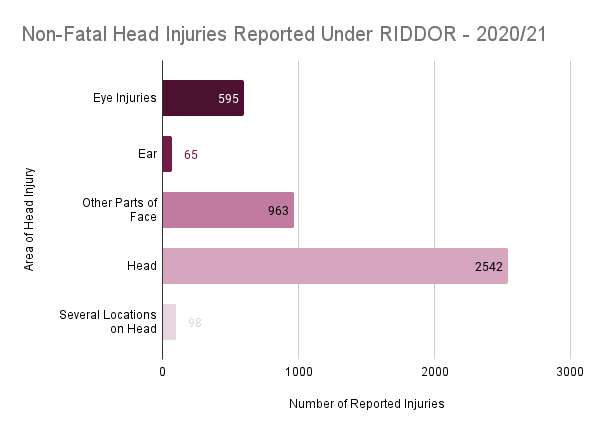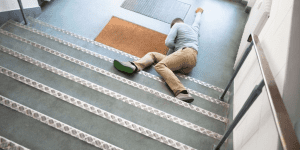Last Updated 22nd November 2024. In this guide, we will discuss faulty gardening equipment claims. If you are employed as a gardener or groundskeeper, you may have to use gardening equipment to carry out certain work tasks. Gardening equipment could present an accident risk if your employer fails to maintain and repair any equipment in a state of disrepair or brokenness. For example, lawnmowers and chain saws should be maintained in accordance with manufacturing guidelines When working equipment is poorly maintained or not maintained at all; it can become defective and lead to accidents.

Your employer owes you a duty of care whilst you are at work. Therefore, they are responsible for carrying out risk assessments and maintaining the correct health and safety standards in the workplace. If your employer breached their duty of care, and as a result, you are injured in a faulty gardening equipment accident, you could be eligible to claim compensation.
Please contact us at Legal Expert to learn whether you could have the grounds to make a personal injury claim. Our team of advisors is available 24/7 to give you free and confidential legal advice at a convenient time.
To get in touch:
- Call us on 0800 073 8804
- Contact us in writing to claim online
- Or talk to an advisor using the live chat feature in the corner of your browser.
Select A Section
- Faulty Gardening Equipment Claims For Accidents At Work?
- How Could Faulty Gardening Equipment Accidents Happen?
- What Injuries Could Faulty Gardening Equipment Cause?
- Compensation For Faulty Gardening Equipment Claims
- How To Make Accident At Work Faulty Gardening Equipment Claims
Faulty Gardening Equipment Claims For Accidents At Work?
Under the Health and Safety at Work etc. Act 1974, employers owe their workers a duty of care while they are carrying out work tasks. The law states that employers must take reasonably practicable steps to ensure the safety of their employees.
For accidents at work faulty gardening equipment claims to be valid they must share a common basis of employer negligence. This is outlined in the following criteria of eligibility:
- Firstly, your employer owed you a duty of care at the time and place of the accident.
- Secondly, your employer breached their duty of care.
- Finally, as a result, you sustained injuries.
As we move through this guide, we will explain how an employer could breach their duty of care and what injuries you could sustain in a gardening accident at work. Additionally, we will explore compensation brackets for various injuries as a guide to settlement figures.
If you are left with any questions regarding faulty gardening equipment claims, please get in touch with us today. Our advisors are both experienced and knowledgeable.
How Could Faulty Gardening Equipment Accidents Happen?
Lots of pieces of gardening equipment have sharp-bladed, sharp edges or motorised cutting mechanisms. Hence, it is vital that the employer trains employees on how to use such equipment safely, provide any personal protective equipment when risks cannot be reduced, and supervise tasks where necessary. Therefore, should an employer fail in their duty of care, a gardener could suffer an injury, such as a traumatic finger amputation.
Under The Provision and Use of Work Equipment Regulations 1998 (PUWER), employers have a duty to take reasonably practicable steps to ensure equipment provided at work is safe to use. The equipment must be suitable for the intended purposes and maintained in a safe condition.
Below we provided examples of what could cause a work equipment accident:
- A lack of maintenance leads to gardening equipment deteriorating and becoming faulty.
- A gardener or grounds worker is not provided with Personal Protective Equipment (PPE) deemed necessary to reduce the risks of the task they are carrying out.
- Employees are not provided with any training in the safe use, storage or maintenance of work equipment.
What Injuries Could Faulty Gardening Equipment Cause?
Faulty gardening equipment could potentially cause injuries that range from mild and transient to serious and life-threatening. This may include:
- Lacerations – caused by a cut from a blade
- Crush injuries – causing broken bones and organ damage
- Loss of vision or blindness – if your eyes are struck or penetrated
- Amputations – such as finger or hand amputation injuries
- Electrocution injuries – caused by faulty electrical equipment
- Paralysis injury – caused by a fall from a height due to faulty ladders
If you would like to discuss making a claim for the injuries you sustained due to your employer breaching their duty of care, please speak to a member of our team.
Types Of Gardening Equipment
There may be various pieces of gardening equipment you use at work on a daily basis:
- Lawnmower
- Hedge shears
- Leaf blower
- Strimmer
- Mulcher
- Sprinkler
- Aerator
- Rake
Contact one of our advisors to learn more about faulty gardening equipment claims.
Compensation For Faulty Gardening Equipment Claims
If your potential claim is successful, your faulty gardening equipment compensation could possibly be made up of two heads of claim. These two heads of claim are called general and special damages.
General damages will definitely be awarded (if your faulty gardening equipment claim is successful) and compensates you for the way you’ve been physically and psychologically affected from the incident. Some factors that will be considered include:
- Loss of amenity.
- Pain severity.
- The length of the recovery period.
You may be asked, at some point during the faulty gardening equipment claims process, to attend an independent medical assessment. The reports made from this assessment can be used with the Judicial College Guidelines (JCG) when your general damages are being calculated.
The JCG is a document containing guideline compensation brackets for a variety of psychological and physical injuries/illnesses.
Guideline Compensation Table
In the table below, you will find some types of injuries that could possibly be suffered following an accident with faulty gardening equipment. Their accompanying compensation brackets, except for the top one, have been taken from the JCG.
Please bear in mind that because all faulty gardening equipment compensation claims are unique, none of these brackets can be guaranteed.
| Injury | Guideline compensation brackets |
|---|---|
| Multiple serious injuries with special damages | Up to £1,000,000+ |
| Injuries Involving Paralysis - Tetraplegia (a) | £396,140 to £493,000 |
| Injuries Involving Paralysis - Paraplegia (b) | £267,340 to £346,890 |
| Moderately Severe Injury Resulting from Brain Damage (b) | £267,340 to £344,150 |
| Hand Injuries (c) | £117,360 to £133,810 |
| Hand Injuries (d) | £75,550 to £110,750 |
| Foot Injuries (b) | £102,470 to £133,810 |
| Injuries Affecting Sight (e) | £66,920 to £80,210 |
| Injuries Affecting Sight (f) | £60,130 to £66,920 |
Special Damages
Special damages might also be awarded and reimburses the financial losses you have incurred due to your injury. This includes:
- Loss of earnings from not being able to work during your recovery.
- Medical bills, such as buying prescriptions.
- Domestic and professional care costs.
Since special damages might not be awarded, providing evidence of your financial losses is essential. Such evidence may be bank statements, payslips, invoices, and receipts.
Please contact us to learn more about how faulty gardening equipment compensation is calculated.
How To Make Accident At Work Faulty Gardening Equipment Claims
To begin your faulty gardening equipment claim, please contact our team of advisors for an assessment of your case. If they find that you have reasonable grounds to make a compensation claim, they may connect you with one of our experienced personal injury solicitors.
What’s more, a solicitor may offer to work on your case under a Conditional Fee Agreement (CFA), which could benefit both yourself and your claim. This type of No Win No Fee agreement involves the following:
- Generally, you won’t pay upfront or during your claim for the services of a solicitor.
- Also, if your claim is unsuccessful, you will commonly not pay for their services at any time.
- On the other hand, in the event your claim is successful, a solicitor working under a CFA can take a small percentage of the compensation, known as a success fee.
- The law caps the amount a solicitor can take. Therefore, you will not be overcharged.
For advice regarding faulty gardening equipment claims, please get in touch with us using the details below:
-
- Call us on 0800 073 8804
- Contact us in writing to claim online
- Or talk to an advisor using the live chat feature in the corner of your browser.
Occupational Accident Claims
To learn more about claiming compensation for an accident at work, please take a look at the resources below:
- How Much Compensation Can I Claim For A Work-Related Illness?
- Advice On Claiming Compensation For An Accident Caused By Dangerous Machinery At Work
- How Much Compensation Can I Claim For A Scaffolding Accident?
GOV.UK advice on Statutory Sick Pay (SSP)
A guide to outdoor working and sun exposure by the HSE
An NHS guide to amputation injuries
Other Guides Available To Check Out
- The Ministry of Defence Accident At Work Claims Guide
- Allergic Reaction After Eating At All Bar One – Can I Claim?
- Lloyds Pharmacy Personal Injury Claims Guide
- Stena Line Ferries Personal Injury Claims Guide
- Best Western Hotel Accident Claims Guide
- Allergic Reaction After Eating At Wimpy – Can I Claim?
- P&O Ferries Personal Injury Claims Guide
- Allergic Reaction After Eating At Beefeater Grill – Can I Claim?
- Quality Save Store Accident Claims Guide
We hope you have found this guide to faulty gardening equipment claims helpful and informative. If you would like to make any enquiries, don’t hesitate to contact us using the details provided.
Guide By Oxland
Edited By Melissa















